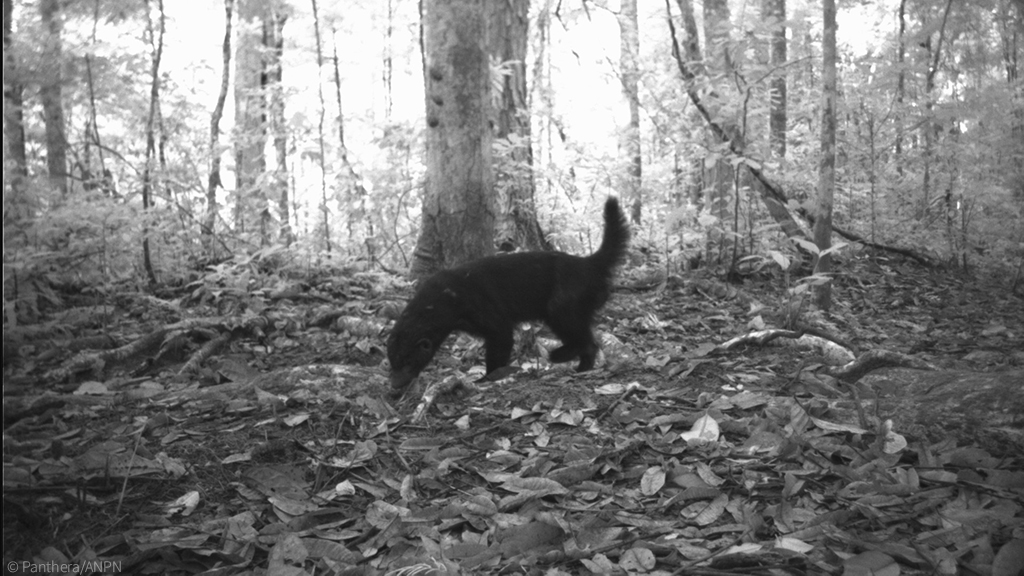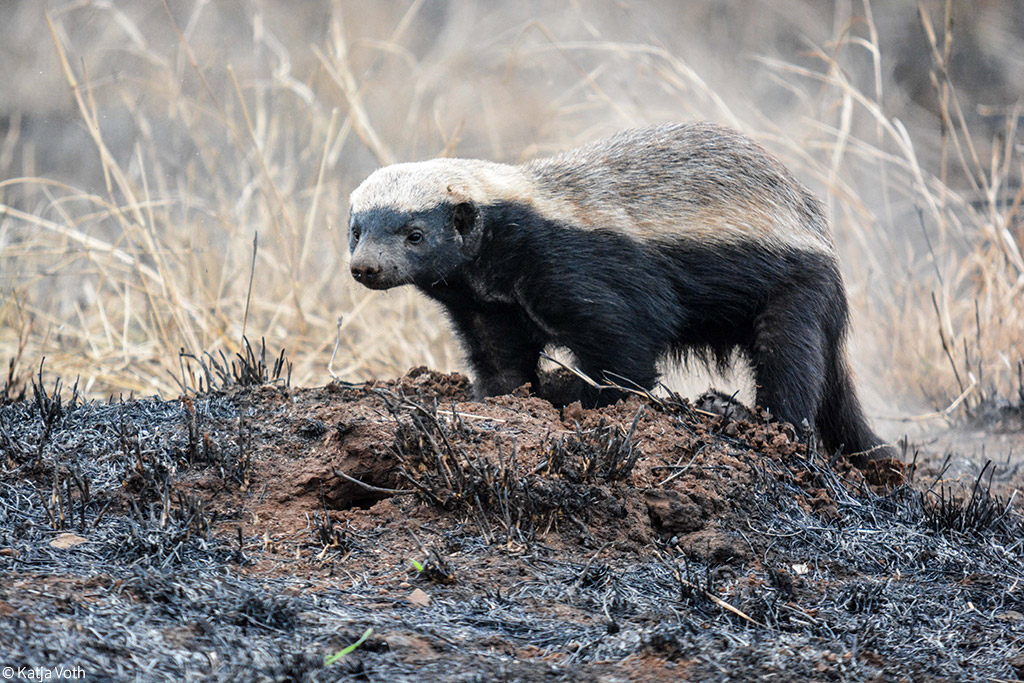
A camera trap photograph of four melanistic (black) honey badgers was captured by researchers in an area near Ivindo National Park in Gabon. The camera traps were placed there as part of a survey conducted by Panthera, who has been tasked by Gabon’s park authorities Agence Nationale des Parcs Nationaux (ANPN) to assess and document local wildlife to ultimately establish a protected reserve. The four black honey badgers captured on camera are most likely related to each other – honey badgers are typically solitary apart from mothers and their one or two offspring, but they are occasionally seen together in small groups.
Dr Philipp Henschel, West and Central Africa Regional Director for global conservation NGO Panthera, explains that in his 21 years of working in Gabon, he has never seen a honey badger there and that up until the more widespread use of camera traps, conservationists had no idea that there were honey badgers in the deeply forested areas of Gabon. When the first camera trap picked up a melanistic honey badger in 2003, the indistinct image had the researchers wondering if they had discovered a new species and it was only a year later that the image of two black animals helped researchers connect the dots and conclude that it was a melanistic form of honey badger (Mellivora capensis).

Nowadays, camera traps are more common across Gabon, and scientists believe that around 50% of the honey badgers in the Gabon forested areas are melanistic. Melanism is a recessive genetic trait that causes excess production of the pigment melanin in the skin or fur, resulting in animals appearing almost black. The expression of melanism is a genetic trait that is not affected by environmental conditions, but the environment can determine the success rate of melanistic individuals, both in terms of survival as well as reproduction. Melanism does not occur in all animal species – there are no melanistic lions, for example (despite the edited images floating around the internet). Still, it does occur in felid species such as leopards and jaguars. Given that melanistic cats are more common in moist rainforests (like Gabon), scientists believe that there is an adaptive advantage to this colouration. Though the mechanisms are less well understood in mustelids (the family which includes badgers, otters and wolverines), the assumption is that the evolutionary mechanisms are the same.

Recent camera trap surveys, initiated by a Panthera field team and since 2015 led by Christopher Orbell, have yielded other significant surprises apart from the black honey badgers, including a melanistic civet. Perhaps even more ecologically important is the record of spotted hyena, a species considered locally extinct in Gabon. Camera trap photos have revealed two adult individuals that appear to have become resident in the mineral-rich forest clearings.

The images also prove that the naturally saline area under survey has an important population of elephants as well as leopards – these numbers of rare wildlife are unusual in an unprotected area given the risks of poaching or mineral resource extraction. The area is the caldera of an ancient volcano and is known to contain rare earths but, so far, the Gabonese government has prevented any industrial use. Dr Henschel praises the philosophy of the president of Gabon, as well as the Minister of Forests and Environment, for the “visionary” plans for Gabon’s park authorities to designate it as a formally-protected area, “which will assure that future government leaders who may be less visionary and environmentally-friendly are held to protect this unique site.”
More stories about honey badgers
- The honey badger – facts and fantastic images
- Honey badger versus jackals
To comment on this story: Login (or sign up) to our app here - it's a troll-free safe place 🙂.![]()






